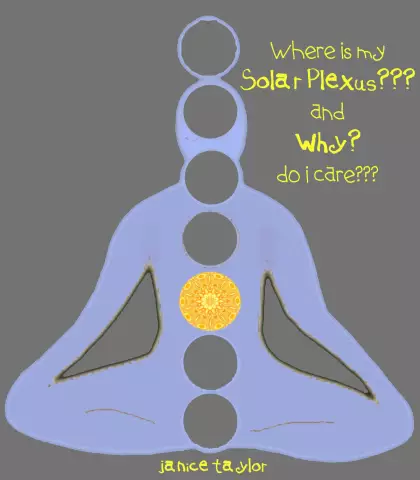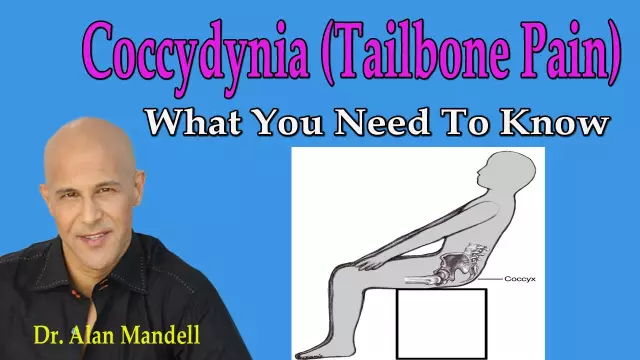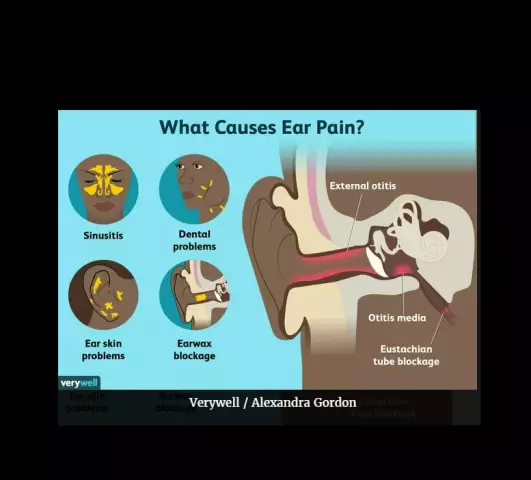- Author Rachel Wainwright [email protected].
- Public 2023-12-15 07:39.
- Last modified 2025-11-02 20:14.
Solar plexus pain - what to do

The celiac plexus is located around the upper part of the abdominal aorta under the diaphragm. The intertwined nerve fibers are grouped at the level of the XII thoracic vertebra, and spread downward to the renal arteries. In front, the celiac plexus is bordered by the pancreas. On both sides - with the adrenal glands. The celiac plexus includes sympathetic and parasympathetic nerve fibers. They spread to all internal organs. The anatomical position exactly in the center of the human body, incoming and outgoing nerve fibers gave the name to the formation - the solar plexus. It houses the control center of the digestive, endocrine and excretory systems. Parasympathetic nerve fibers regulate the activity of the gastrointestinal tract and gallbladder. Pain, nausea and hunger are transmitted along sympathetic nerves. When the solar plexus hurts, the reasons can be very diverse: from damage to the nervous tissue, to diseases of internal organs, including those located at a sufficient distance from the celiac plexus.
The solar plexus hurts: reasons
With a direct effect on nerve fibers, the source of pain is the celiac plexus. Causes of damage to nerve tissue:
- Neuritis;
- Neuralgia;
- Tumor.
Neuritis is an inflammation of a nerve. The inflammatory process of the celiac plexus is called solaritis or plexitis. The causative agents of neuroinfections can be infectious or mechanical. Infections are caused by viruses because some of them have the ability to integrate into neurons. The mechanical causes of epigastric pain are caused by compression of nerve fibers. It is caused by edema of the nervous tissue itself, or of nearby organs.
Plexitis manifestations:
- Sharp and severe pain in the solar plexus of a stabbing nature;
- Feeling of heat inside the abdomen;
- Forced position of the body - the patient lies on his side, curled up;
- The attacks of pain are repeated with physical exertion.
Neuralgia is a painful sensation due to exposure to nervous tissue by irritants: mechanical, infectious, helminthic, traumatic. Often, pain in the epigastric region is at first mediated, then nerve tissue is also involved in the inflammatory process. Unlike neuritis, with neuralgia, reflected pain is observed. With ischemic heart disease, there is a dull pain in the solar plexus, and with an acute attack of angina pectoris, the pain increases. At the same time, the gastrointestinal tract suffers. Pathological impulses from the celiac plexus cause heartburn, nausea, diarrhea. In some cases, it is these symptoms that appear with myocardial infarction.
The growth of a tumor, both of the nervous tissue (neuroma) and of the surrounding organs, leads to compression of the nerve bundle. As a result, the solar plexus hurts, which can be caused by metastases of a cancerous tumor located in any internal organs, including the uterine appendages.
The solar plexus hurts: causes associated with the pathology of internal organs
Pain in the epigastric region appears as a result of a reflex reaction to high blood pressure. Since the plexus is located around the aorta, baroreceptors transmit signals not only to the heart, but also to internal organs. This is how the adaptation reaction is carried out in a stressful situation. At the same time, stress is meant not only and not so much a mental disorder, but hemodynamic disturbances in the body. Attacks of eclampsia in the pathology of pregnancy, first of all, are characterized by pain in the solar plexus, nausea and visual impairment.
The most common causes of epigastric pain are disorders of the gastrointestinal tract:
- Inflammatory diseases: gastritis, duodenitis;
- Peptic ulcer of the stomach and duodenum;
- Pancreatitis;
- Inflammatory processes in the small intestine;
- Abdominal pathology.
With inflammation of the gastric mucosa, immediately after a meal, a dull pain begins in the solar plexus, but if the duodenum is inflamed, hunger pains are felt.
Perforation of a stomach or duodenal ulcer is accompanied by severe pain in the solar plexus of such intensity that it is called "dagger". Perforation of the intestine or stomach results in the discharge of gastric juice into the abdominal cavity. Digestive secretions and hydrochloric acid irritate the receptors that transmit a signal to the center - the celiac plexus.
In the chronic course of peptic ulcer disease, the solar plexus hurts when pressed, especially in the stages of remission. Taking medications that lower acidity quickly relieve pain.
In pancreatitis, first of all, the nervous tissue of the celiac plexus reacts, since it is in close proximity to the pancreas. In fact, it is not located under the stomach, but behind it. The gland owes its name to anatomists who consider a person in a supine position. Therefore, with pancreatitis, the solar plexus hurts, the reason for this condition is understandable. However, acute inflammatory disease of the pancreas is not limited to epigastric pain. Since all the nerve processes of the celiac plexus are involved in the process, the pain is girdle in nature. Eating food, regardless of its quality and quantity, instantly provokes severe pain in the solar plexus, which is similar in intensity to that of a perforated stomach ulcer and duodenal ulcer.
The small intestine is also located in close proximity to the celiac plexus. With inflammatory processes, regardless of the causes of their occurrence, pain appears in the solar plexus, nausea is caused by reflex irritation of the central nervous system. A similar condition develops in humans with the development of seasickness.
Abdominal pathology includes the following conditions:
- Adhesive disease;
- Peritonitis;
- Helminthic invasion (roundworm, echinococcus);
- The prolapse of organs (stomach, kidneys).
Outside of exacerbation, the solar plexus hurts when pressed, and when the inflammatory reaction intensifies, the pain becomes unbearable.
Severe pain in the solar plexus in a healthy person

Against the background of absolute health, in the absence of any pathology, a person may feel pain in the epigastric region. A similar condition is noted with injuries. Most often, sports. In an exceptional, but rather frequent case, the solar plexus hurts, the reason for which is the wearing of a belt tightened to the last fastener.
Manifestations of traumatic celiac plexus pain:
- Feeling of heat in the abdominal cavity;
- Shortness of breath with difficulty breathing;
- Nausea with urging to defecate;
- Darkening in the eyes.
In mild cases, an attack is accompanied by a temporary clouding of consciousness, in severe cases - a knockout state. For injuries, first aid is provided on the sports ground, for diseases - in a medical hospital.
YouTube video related to the article:
Found a mistake in the text? Select it and press Ctrl + Enter.






